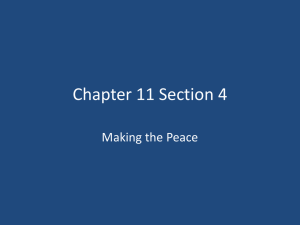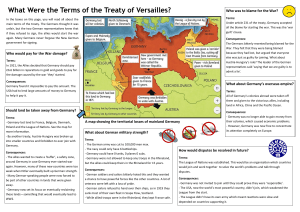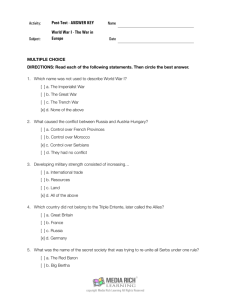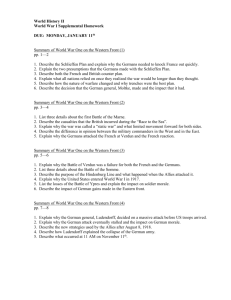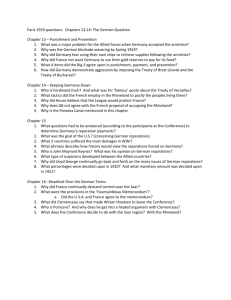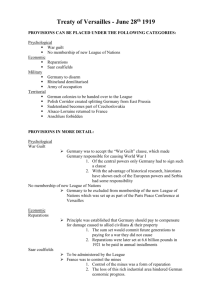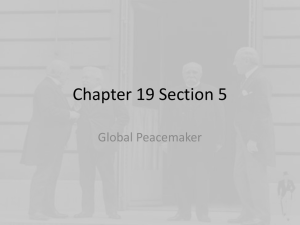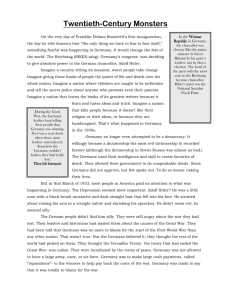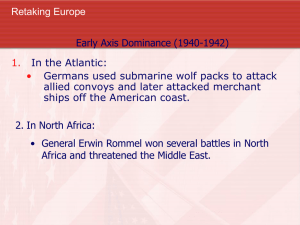Provisions of Treaty of Versailles
advertisement
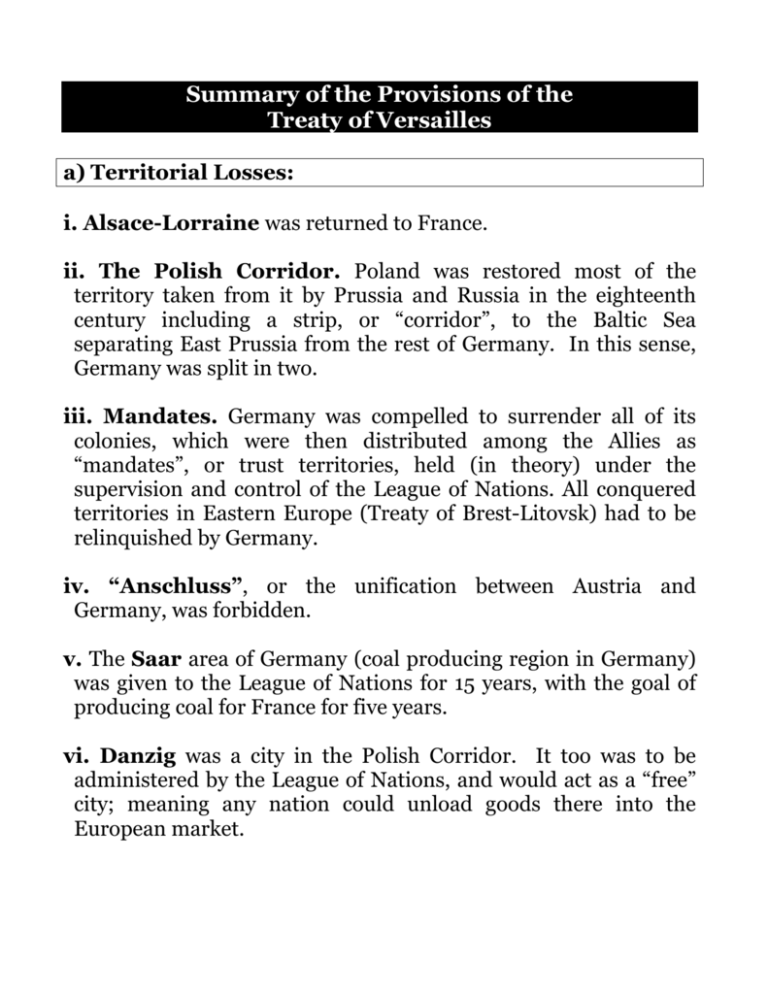
Summary of the Provisions of the Treaty of Versailles a) Territorial Losses: i. Alsace-Lorraine was returned to France. ii. The Polish Corridor. Poland was restored most of the territory taken from it by Prussia and Russia in the eighteenth century including a strip, or “corridor”, to the Baltic Sea separating East Prussia from the rest of Germany. In this sense, Germany was split in two. iii. Mandates. Germany was compelled to surrender all of its colonies, which were then distributed among the Allies as “mandates”, or trust territories, held (in theory) under the supervision and control of the League of Nations. All conquered territories in Eastern Europe (Treaty of Brest-Litovsk) had to be relinquished by Germany. iv. “Anschluss”, or the unification between Austria and Germany, was forbidden. v. The Saar area of Germany (coal producing region in Germany) was given to the League of Nations for 15 years, with the goal of producing coal for France for five years. vi. Danzig was a city in the Polish Corridor. It too was to be administered by the League of Nations, and would act as a “free” city; meaning any nation could unload goods there into the European market. b) Military Clauses: i. The Rhineland was Demilitarized. The area of the Rhine Valley and from the Rhine to the French frontier was to be a permanently demilitarized zone (no Germany army). Allied armies were to occupy the west bank of the Rhine for a period of 15 years. This was set up to act as a buffer between France and Germany. ii. Military Restrictions. Conscription was forbidden in Germany and the German army was limited to 100,000 men who had to serve for 12 years (this way, no one would volunteer!). Its navy and air force were also severely restricted in size. The production of submarines, planes and tanks was forbidden. iii. The German Fleet. The fleet was surrendered to Great Britain at Scapa Flow, Scotland. iv. Merchant shipping. Germany gave up all of its merchant shipping to the Allies in compensation for Allied shipping losses during the war. In addition it had to pay large quantities of coal to France, Belgium and Italy. c) Reparations: i. Article 231: The War-Guilt Clause. This clause stated that Germany alone must accept responsibility for the start of the war. Bluntly stated this was a mistake. The Germans were furious over this article. The German Chancellor resigned in protest. German sailors scuttled the German fleet being held at Scapa Flow, Scotland. All in vain! The Allies threatened to resume hostilities, which would have meant the military occupation of Germany. ii. Reparations. Because the Germans were responsible for the war (Article 231), it meant that they would be forced to pay the allies huge sums of money to pay for the damage caused by the war. At Versailles, no financial figure was discussed; that decision was forwarded to a committee. In 1921 the Reparations committee stated that Germany must pay the allies 6.6 Billion Pounds in gold, or 33 billion American dollars (ouch!). Also, all coal in the Saar would go to France for five years. d) The Covenant, or Constitution, of the League of Nations: This was included in the Treaty, meaning that each state signing the document would automatically be named to membership within the League of Nations. The Germans, of course, were an exception; they were bad.
